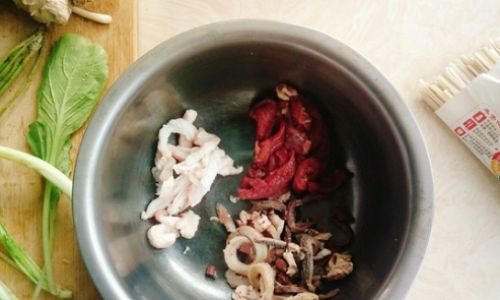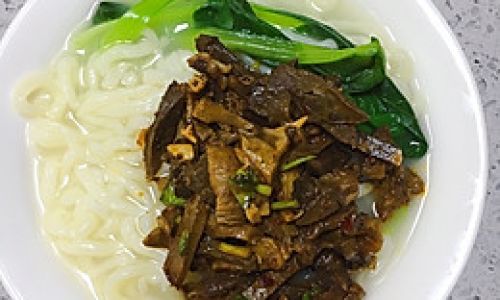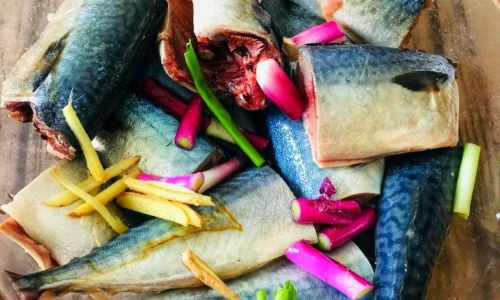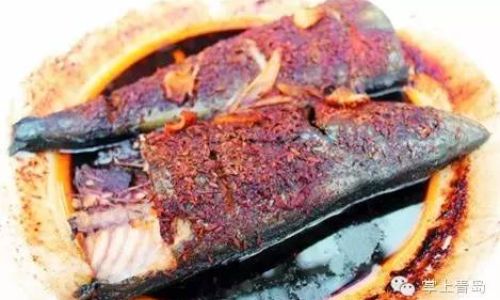Introduction
In the vast culinary landscape of global gastronomy, few dishes encapsulate the essence of regional flavors and traditions as vividly as lamb offal noodles. This hearty and flavorful meal, often found in the culinary repertoires of Central Asian, Middle Eastern, and some parts of East Asian cuisines, is a testament to the ingenuity of cooks who transform humble ingredients into culinary masterpieces. Lamb offal noodles, or as they are known in various dialects and regions, are a delightful blend of textures and tastes, combining the rich, earthy flavors of lamb innards with the comforting warmth of a steaming bowl of noodles.
This article embarks on a culinary journey, exploring the intricate steps and techniques involved in making lamb offal noodles. From sourcing the freshest ingredients to mastering the art of broth preparation and noodle cooking, every aspect of this dish is steeped in tradition and requires a meticulous approach. By the end of this exploration, readers will not only have a comprehensive understanding of how to make lamb offal noodles but will also appreciate the cultural significance and historical context that underpin this culinary delight.
Sourcing the Ingredients

The foundation of any great dish lies in the quality of its ingredients, and lamb offal noodles are no exception. The primary ingredients include lamb innards such as the heart, liver, lungs, and intestines, as well as noodles, typically made from wheat flour. While some recipes may incorporate additional elements like vegetables, spices, and herbs, the core components remain the same.
Lamb Innards:
- Heart: Tender and flavorful, the heart is a key ingredient in lamb offal noodles. It should be firm to the touch and free of any discoloration or off odors.
- Liver: Rich in iron and vitamins, the liver adds a creamy texture and deep, earthy flavor to the dish. Look for livers that are firm, smooth, and a healthy shade of brown.
- Lungs: Often overlooked, lungs can add a unique texture and flavor profile when cooked properly. They should be pinkish-gray and free of any blood clots or hard spots.
- Intestines: Cleaned and prepared intestines provide a savory, slightly chewy element to the noodles. Ensure they are thoroughly rinsed and free of any fat or residue.
Noodles:
- Wheat Flour Noodles: Traditional lamb offal noodles are made with wheat flour, which gives them a firm yet tender texture. Freshly made noodles are preferred, but dried noodles can also be used if fresh ones are unavailable.
Broth Ingredients:
- Bones: Lamb bones, especially those from the neck or shank, are crucial for making a rich and flavorful broth. They should be broken down to expose the marrow, which adds depth to the broth.
- Aromatics: Onions, carrots, celery, and garlic form the base of the broth, providing sweetness and aroma. Fresh herbs like parsley, thyme, and bay leaves can also be added for additional flavor.
- Seasonings: Salt, pepper, and sometimes a splash of vinegar help to balance and enhance the flavors of the broth.
Additional Ingredients:
- Vegetables: Sliced onions, carrots, and bell peppers can be added to the broth or served as a topping.
- Spices and Herbs: Cumin, coriander, paprika, and chili flakes can be used to add heat and complexity to the dish. Fresh cilantro or parsley provide a refreshing finish.
Preparing the Lamb Innards
Before cooking, the lamb innards must be meticulously cleaned and prepared to ensure they are safe to eat and free of any unwanted flavors or textures.
Cleaning the Innards:
- Heart and Liver: Rinse these organs under cold running water, pat them dry, and trim away any fat or sinew.
- Lungs: Soak lungs in cold water for about 30 minutes, then rinse thoroughly and pat dry. Cut away any dark or discolored areas.
- Intestines: This is the most labor-intensive part. Intestines must be turned inside out, rinsed thoroughly under cold water, and scraped clean of any fat or residue. They can then be rinsed again and tied into knots or cut into manageable pieces.
Blanching:
Blanching the innards helps to remove any impurities and tightens their texture, making them more suitable for cooking in broth.
- Bring a large pot of water to a boil.
- Add a handful of salt and a splash of vinegar.
- Blanch the innards separately (heart, liver, lungs, and intestines) for about 2-3 minutes each.
- Remove them with a slotted spoon and plunge them into ice water to stop the cooking process.
- Drain and set aside.
Making the Broth

The broth is the soul of lamb offal noodles, providing the dish with its rich, savory flavor.
Assembling the Ingredients:
- Place lamb bones in a large stockpot.
- Add chopped onions, carrots, celery, and garlic.
- Fill the pot with cold water, ensuring all ingredients are fully submerged.
Simmering:
- Bring the pot to a boil over high heat.
- Skim off any foam or impurities that rise to the surface.
- Reduce the heat to low and let the broth simmer gently for at least 4-6 hours, or until the bones are soft and the broth is rich and golden.
- Add aromatics like parsley, thyme, and bay leaves during the last hour of simmering.
Seasoning:
- Taste the broth and adjust the seasoning with salt and pepper.
- A splash of vinegar can help to brighten the flavors.
Cooking the Noodles and Innards
With the broth ready, it’s time to cook the noodles and innards.
Cooking the Noodles:
- If using fresh noodles, cook them in boiling water for 2-3 minutes, or until al dente.
- Drain and rinse under cold water to prevent sticking.
- If using dried noodles, follow the package instructions for cooking time.
Cooking the Innards:
- Return the blanched innards to the simmering broth.
- Cook for an additional 30-45 minutes, or until they are tender and flavorful.
- Taste the broth periodically and adjust the seasoning as needed.
Serving Lamb Offal Noodles
Serving lamb offal noodles is an art form that combines presentation with flavor.
Assembling the Dish:

- Place a generous portion of cooked noodles in each serving bowl.
- Ladle hot broth over the noodles, ensuring they are fully submerged.
- Add a piece of each type of innard to the bowl.
Garnishing:
- Top the noodles with sliced onions, carrots, and bell peppers for added texture and color.
- Sprinkle with cumin, coriander, paprika, and chili flakes for a spicy kick.
- Garnish with fresh cilantro or parsley.
Serving Suggestions:
- Lamb offal noodles are best enjoyed hot, with a side of pickled vegetables or a dollop of yogurt to balance the rich flavors.
- Pair with a crisp green salad or a side of steamed vegetables for a more balanced meal.
Cultural Significance and Variations
Lamb offal noodles are more than just a meal; they are a cultural artifact that reflects the culinary traditions and histories of various regions. In Central Asia, for example, they are often served during festivals and celebrations, symbolizing abundance and prosperity. In the Middle East, they may be spiced with sumac, za’atar, and lemon juice, reflecting the region’s unique flavor profile.
In China, particularly in regions like Shaanxi and Ningxia, lamb offal noodles are a staple of local cuisine. Here, they are often served with a spicy, tangy sauce made from chili oil, vinegar, and garlic. The dish is not only enjoyed for its flavor but also for its nutritional benefits, as lamb innards are rich in vitamins and minerals.
Conclusion
Making lamb offal noodles is a labor of love that requires patience, precision, and a deep appreciation for the culinary arts. From sourcing the freshest ingredients to meticulously preparing the broth and innards, every step of the process contributes to the final dish’s rich, savory flavor and satisfying texture. Whether enjoyed as a hearty meal or a festive celebration, lamb offal noodles stand as a testament to the ingenuity and creativity of cooks who have turned humble ingredients into culinary masterpieces.
As we conclude this culinary journey, we hope readers have not only learned how to make lamb offal noodles but have also gained a deeper understanding of the cultural significance and historical context that underpin this dish. Whether you’re a seasoned chef or a home cook eager to try something new, lamb offal noodles offer a rewarding culinary experience that is sure to delight the senses and nourish the soul.




0 comments